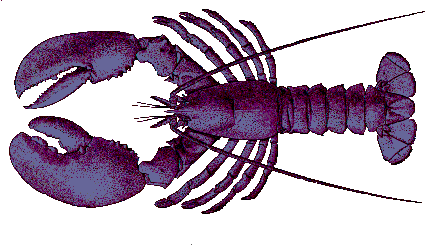

 |
 |
| The lobster found on off the Mid-Atlantic
and New England is commonly known as the "Maine" lobster, even though these
delicious crustaceans have a range that extends much farther than that
state's waters. However, Maine does have a very large lobster fishery and
in many people's minds Maine and lobster are closely connected, and perhaps
deservedly so.
The lobster fishery is primarily a trap fishery. Otter trawlers do catch lobster, sometimes in fairly large numbers, but as bycatch rather than as a directed fishery. While most people still think of the traditional, half-rounded lobster pots constructed of wooden strips, much of the industry has switched over to traps constructed of coated wire mesh. These pots are more rugged and are also much more amenable to modern manufacturing techniques. Depending on the area being fished the pots are either placed singly, with their location marked by a distinctively painted buoy, or in strings of several pots attached to a single line. The lobster are attracted to the pots by the bait - usually chunks of an oily fish like herring or menhaden - or by the offer of shelter. Once inside, the lobsters can't escape but remain alive until hauled to the surface by the fisherman. All states have a minimum lobster size, which is rigidly adhered to, and prohibitions against keeping "berried" lobsters (females that have extruded their eggs and are carrying them about attached to the swimmerets). Some states have a minimum size limit as well. While New Jersey is not one of the major lobster producing states, fishermen here harvest several millions of dollars worth each year. |